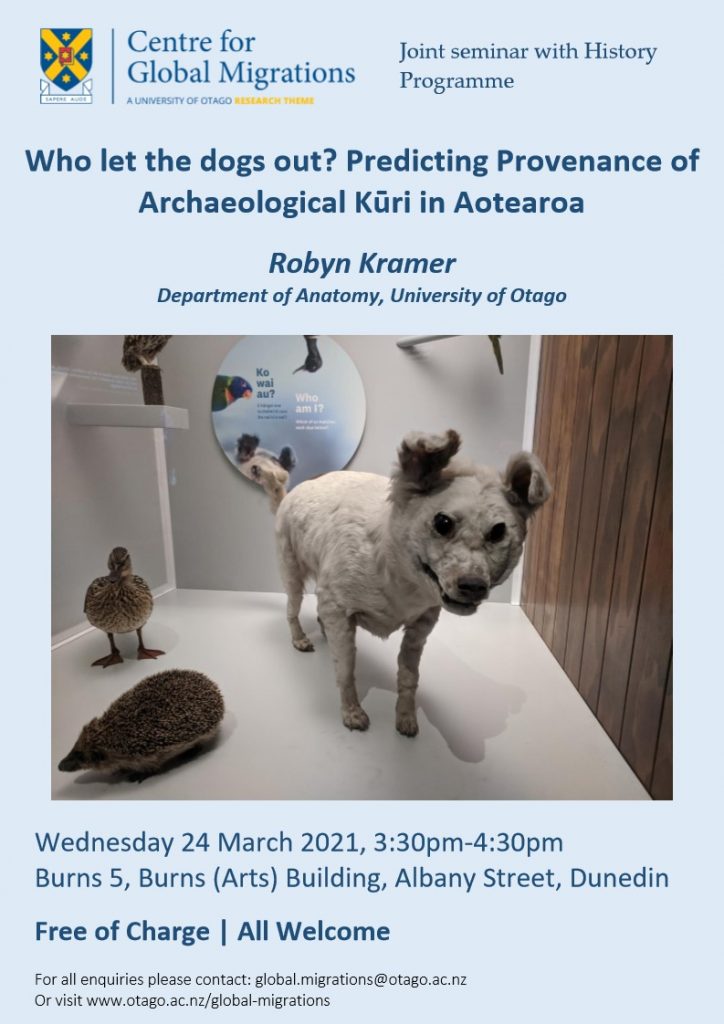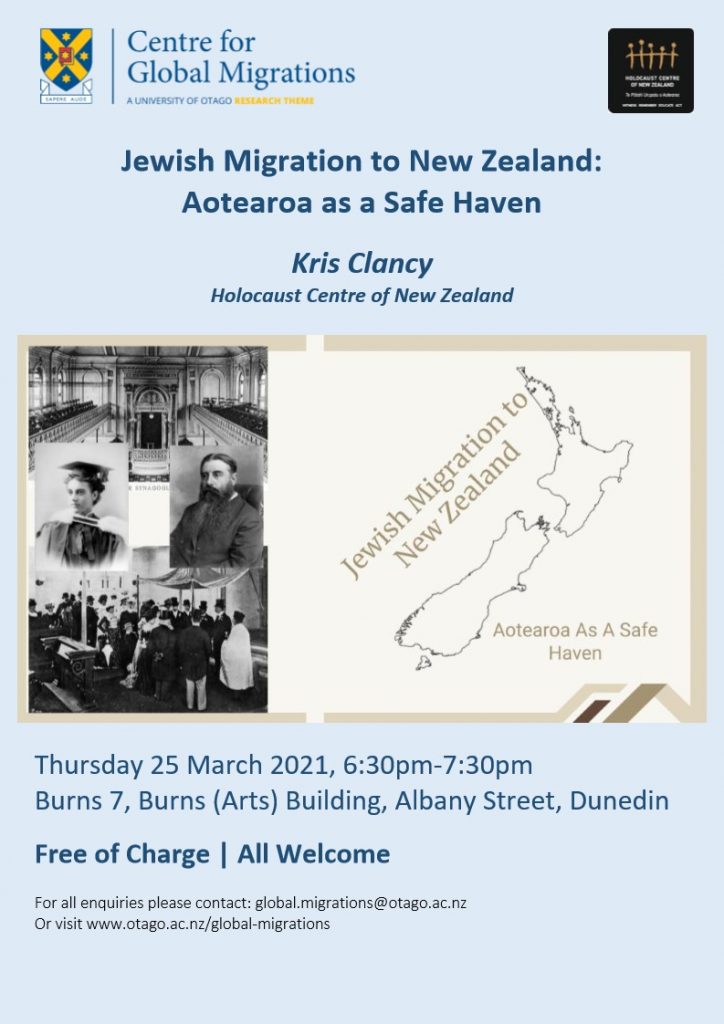Seminar: Who let the dogs out? Predicting Provenance of Archaeological Kurī in Aotearoa
On Wednesday 24 March 2021 at 3.30pm, the Centre for Global Migrations and History Programme host a joint seminar from Robyn Kramer (Anatomy, University of Otago). Robyn’s abstract is as follows:
Abstract
When Māori settled Aotearoa around AD 1300, they brought kurī with them on their waka (sea-faring canoes). Kurī lived in close quarters and travelled with Māori and were (and still are) considered highly prized, or taonga. Archaeological evidence suggests that early Māori adapted quickly to their new environment and moved rapidly across the landscape of both the North and South Islands. After initial settlement, there were regional differences in settlement patterns, but the true extent of mobility and migration for pre- and post-contact Māori remains unknown and represents the research problem for my PhD.
My doctoral research constructs a map depicting strontium (87Sr/86Sr) variation throughout Aotearoa that I use to investigate the migration and interaction spheres of early Māori and their domesticated dogs, kurī. Human mobility can be predicted using 87Sr/86Sr values derived from dental enamel because teeth record the geochemical signature of food resources ingested during tooth formation and are indicative of childhood residency. Analyzing 87Sr/86Sr involves the destructive analysis of culturally significant human skeletal remains, kōiwi tangata, and this is a major issue in Aotearoa bioarchaeology. This research avoids the need to destroy human remains by using the kurī teeth as a proxy for humans, known as the “Canine Surrogacy Approach”. My research uses a maximum-likelihood assignment model to predict the origin of 80 kurī from 13 NZ archaeological sites to elucidate mobility patterns and potential interaction spheres of pre- and post-contact Māori populations.
Public Lecture: Jewish Migration to New Zealand: Aotearoa as a Safe Haven
Free Public Lecture
Jewish Migration to New Zealand: Aotearoa as a Safe Haven
Kris Clancy
Holocaust Centre of New Zealand
Thursday 25 March 2021, 6.30pm-7.30pm
Burns 7, Burns (Arts) Building, Albany Street, Dunedin
Since its founding as a British colony in the 1800s, Jews have been part of the fabric that makes up New Zealand. From the earliest days as whalers and traders, Jews have helped to shape Kiwi society from well known commercial brands to leading political figures. Still, this safe haven has not always been the land of paradise for Jews fleeing persecution in Europe. Restrictive immigration policies and antisemitism has been a part of this story and continues to shape the New Zealand Jewish community.
Kris Clancy of the Holocaust Centre of New Zealand speaks on the impact of Jews on New Zealand and New Zealand’s response to Jewish immigration at their most important time of need: the Holocaust. There will be an opportunity to ask questions following the talk.



